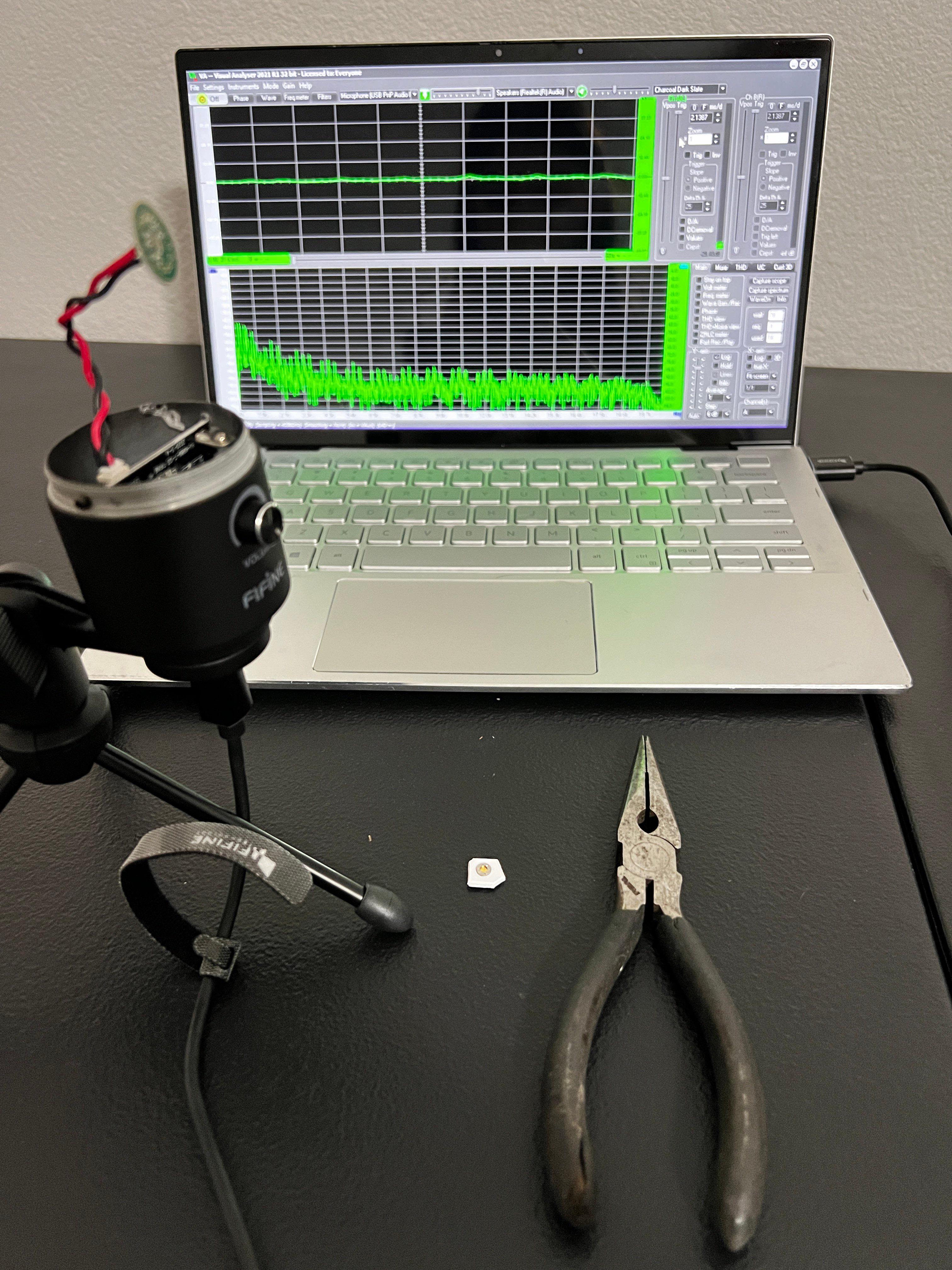

Taya Martinez
John H. Guyer High SchoolClass of 2024Argyle, Texas
About
Hello, my name is Taya Martinez, and I am a high school student in North Texas. I am passionate about nuclear science, and I want to share my passion with others by breaking down the stigma of how we view crucial climate and energy crisis solutions like nuclear energy. My project is creating and sharing a blog and small research portfolio for accessible nuclear experiments and applications at home.Projects
- Nuclear Science Experiments and Outreach with mentor Soha (Nov. 17, 2022)
Project Portfolio
Nuclear Science Experiments and Outreach
Started Mar. 12, 2022

Abstract or project description
Alpha radiation is a common form of radiation energy with many applications. Seismic and oceanographic devices, smoke detectors, and static eliminators all use sources of alpha radiation. Using a condenser microphone as a radiation detector is what I am demonstrating through easy and accessible means for anyone to try. This experiment is simple, which opens many opportunities for other approaches and for it to be changed for different demonstrations in later experiments. The radiation from Americium 241 from a smoke detector has an ionizing effect, so when it is held up to the diaphragm of a modified condenser microphone, it creates a separation of charges in the space between the diaphragm and the backplate since the radiation creates a charge in neutral air molecules. So, when the ions move, the diaphragm detects this movement and sends signals to the amplifier, which then allows us to process this effect as sounds on an audio oscillator program. This phenomenon helps inspire many technologies able to be built or modified from pre-existing, easy to access material, and can be used to create devices that can detect ionizing radiation for safety measures.
Aside from this experiment, my project also entails a blog that showcases advocacy for weapon policy and nuclear energy, detailing an in depth analysis of Laos' bombing history, to nuclear fusion and its potential.